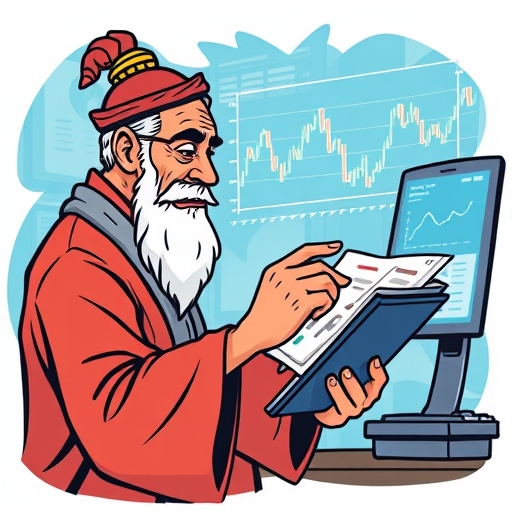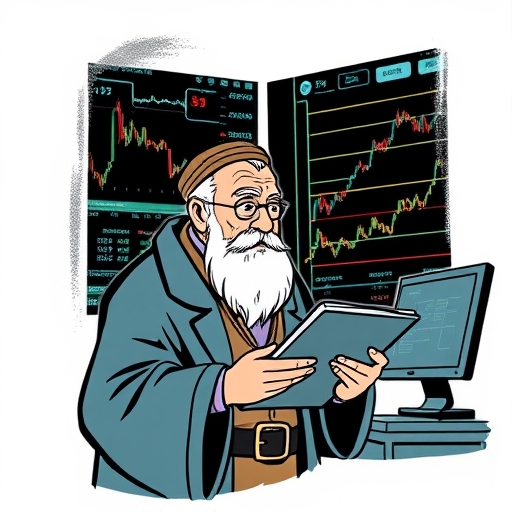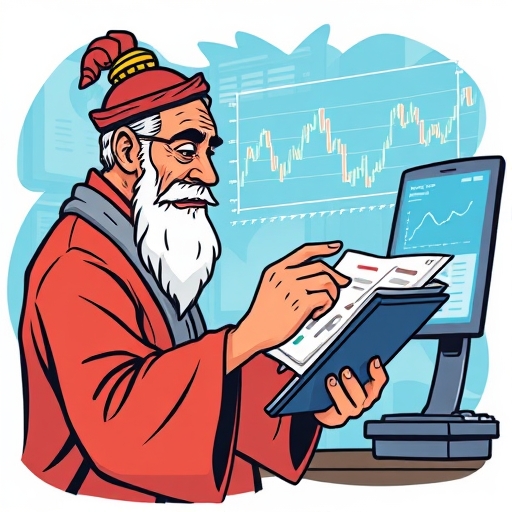Decoding Success: Who Deserves the Title of ‘The Best Trader in the World’?
The world of financial markets is a realm of immense opportunity, risk, and captivating stories of individuals who have amassed fortunes through their trading acumen. From legendary figures whose names are synonymous with historical market events to modern innovators employing cutting-edge technology, the allure of mastering the markets is undeniable. It leads us to a fascinating question: who is the best trader in the world? Is it the one with the highest cumulative profit, the most consistent returns, the deepest understanding of global economics, or perhaps the ability to predict and capitalize on major crises?
Defining the “best” is inherently subjective. It involves considering diverse strategies, historical impact, resilience through turbulent times, and even contemporary recognition. There isn’t a single, universally agreed-upon champion. Instead, we can look to a pantheon of renowned traders, each exceptional in their own right, whose careers offer invaluable lessons for anyone navigating the complexities of trading, whether you are just starting out or seeking to refine your existing strategies.
In this exploration, we will delve into the profiles of some of the most famous traders in history and recent times. We will examine the strategies they employed, the significant market events they influenced or profited from, and the personal traits that contributed to their success. By studying these titans, we hope to distill key principles and insights that can inform your own approach to becoming a more proficient and successful trader.

Adding to the exploration of traders and their methods, it’s helpful to categorize their strategies and the environments in which they excelled. This can enhance our understanding of their different approaches:
- Macro Trading: Focusing on global economic trends to make large-scale trades.
- Fundamental Analysis: Evaluating assets based on intrinsic values influenced by economic factors.
- Quantitative Trading: Utilizing mathematical models and algorithms to identify trading opportunities.
| Trader | Notable Achievements | Trading Style |
|---|---|---|
| George Soros | Broke the Bank of England, profited $1 billion | Macro Trading |
| Michael Burry | Predicted the 2008 financial crisis | Fundamental Analysis |
| Jim Simons | Consistent high returns through quantitative models | Quantitative Trading |
George Soros: The Macro Visionary and the Pound Sterling Bet
When discussing the most famous traders, George Soros is often the first name that comes to mind. Born in Hungary and a survivor of the Nazi occupation, Soros’s journey is one of resilience and intellectual prowess. He is widely known as “the man who broke the Bank of England,” a title earned through a legendary trade in 1992. This event, known as Black Wednesday, saw Soros and his fund, Soros Fund Management, execute a massive short sale against the British pound (GBP).
At the time, the UK was part of the European Exchange Rate Mechanism (ERM), which required it to keep the pound’s value within a narrow band against other European currencies, primarily the German Mark. However, the UK’s economic conditions were struggling compared to Germany’s post-reunification boom. Soros, along with his chief strategist Stanley Druckenmiller, correctly assessed that the pound was significantly overvalued within the ERM framework and that the Bank of England would eventually be forced to devalue it or exit the system.
Their conviction was so strong that they borrowed billions of pounds and sold them, expecting the currency’s value to fall. When the pressure became unbearable, despite desperate measures like raising interest rates, the Bank of England capitulated, withdrawing the pound from the ERM. The pound’s value plummeted, and Soros’s bet paid off spectacularly, reportedly earning his fund over $1 billion in a single day. This trade cemented Soros’s reputation as a master of macro trading – making large-scale bets based on global economic and political trends.
What lessons can we glean from Soros’s approach? Firstly, it highlights the importance of understanding the interplay between economic fundamentals, government policy, and market dynamics. Soros didn’t just react to price movements; he analyzed the underlying structural weaknesses. Secondly, it demonstrates the power of conviction and scale. Taking such a massive position required not only deep analysis but also immense confidence in that analysis. However, it also underscores the high stakes and potential for significant losses if the analysis is wrong.

Michael Burry: Foresight, Shorting the Bubble, and The Big Short
In the realm of anticipating and profiting from market collapse, Michael Burry stands out. A physician by training, Burry transitioned to finance and founded Scion Capital. His claim to fame, immortalized in the book and film “The Big Short,” is his foresight regarding the 2008 subprime mortgage crisis.
While many on Wall Street were still riding the wave of the housing market boom, Burry meticulously examined the underlying data on mortgage loans, particularly subprime mortgages. He noticed the alarming rate of defaults among these risky loans and the precarious structure of the mortgage-backed securities (MBS) and collateralized debt obligations (CDOs) built upon them. He correctly concluded that the entire edifice was unstable and poised for collapse.
Acting on this conviction, Burry developed a strategy to short the housing bubble. This wasn’t straightforward, as direct shorting of individual mortgages wasn’t feasible on a large scale. Instead, he sought out financial instruments that would increase in value if the underlying mortgages defaulted. He found these in credit default swaps (CDS) – essentially insurance contracts against the default of specific mortgage-backed securities. Burry spent years and a considerable amount of his investors’ money convincing investment banks to sell him these swaps against bundles of subprime mortgages, often facing skepticism and resistance.
When the housing market eventually collapsed and defaults surged, the value of these credit default swaps soared. Burry’s seemingly contrarian and complex bet paid off massively, generating hundreds of millions in profits for his fund and investors. His story is a powerful illustration of deep fundamental analysis, independent thinking, and the courage to stand against the prevailing market sentiment. It shows that sometimes, the most profitable trades come from identifying systemic risks that the majority are overlooking.
Burry’s approach teaches us the value of digging deep into the data, questioning conventional wisdom, and having the tenacity to pursue a trade based on solid analysis, even when it’s unpopular or difficult to execute. His focus on complex derivatives also highlights the need for understanding sophisticated financial instruments if you plan to venture beyond simple stock or bond trading.
David Tepper: Mastering Distressed Assets for Massive Gains
David Tepper, the founder of Appaloosa Management, built his reputation and fortune by specializing in distressed debt and the securities of companies or even countries facing financial difficulty. While many investors flee from troubled assets, Tepper’s strategy involves conducting deep dives into the fundamentals of distressed entities, assessing their true underlying value, and buying their debt or equity at steep discounts when others are fearful.
Tepper’s notable success came during the 2008 financial crisis. While banks were reeling and their stock prices plummeted to what seemed like unfathomably low levels, Tepper saw an opportunity. He analyzed major financial institutions like Bank of America and Citigroup, concluding that they were likely to be bailed out by the government and would eventually recover, making their deeply discounted stocks incredibly undervalued.
He famously invested billions of dollars in these troubled banks’ stock during the height of the crisis. As the economy stabilized and these institutions recovered with government support, their stock prices rebounded dramatically. Tepper’s fund reportedly made billions in profit from these investments. His success wasn’t accidental; it was the result of rigorous financial analysis, a deep understanding of credit markets, and a willingness to take calculated risks based on his valuation.
What can we learn from David Tepper? His career emphasizes the potential rewards of value investing and distressed asset investing, but it also highlights the expertise and risk involved. You need a strong grasp of corporate finance, accounting, and bankruptcy procedures to assess whether a troubled entity is truly undervalued or simply destined for failure. Tepper’s ability to remain calm and execute large-scale trades while the market was in a state of panic is a testament to his emotional discipline and conviction in his analysis. It teaches us that sometimes, the greatest opportunities arise when fear is at its peak.
| Key Traits | Description |
|---|---|
| Market Knowledge | Exceptional understanding of global economic trends and market conditions. |
| Analytical Rigor | Decisions backed by extensive research and data interpretation. |
| Risk Management | Calculated risks taken based on analysis, understanding downsides. |
Jim Simons and Renaissance Technologies: The Power of Quantitative Edge
Breaking away from traditional fundamental or macro analysis, Jim Simons, a brilliant mathematician and former codebreaker, revolutionized trading with his quantitative approach. He founded Renaissance Technologies, one of the most successful and secretive hedge funds in the world, known for its flagship Medallion fund.
Simons and his team of mathematicians, physicists, and computer scientists developed complex algorithms and statistical models to identify and exploit tiny, short-term inefficiencies in the market across various asset classes – equities, commodities, futures, and currencies. Their trading decisions are almost entirely based on the patterns and signals generated by these models, with minimal human discretion.
The success of Renaissance Technologies, particularly the Medallion fund (which is largely closed to outside investors), is legendary, boasting annualized returns that have consistently outperformed virtually all other investment funds for decades, often by astronomical margins. This success is built upon massive data analysis, sophisticated algorithms, high-speed execution, and continuous refinement of their models.
What does Jim Simons teach us? Firstly, it underscores the growing importance of technology and data analysis in modern trading. While not everyone can replicate Renaissance’s scale or complexity, the principle of using data-driven insights to inform trading decisions is increasingly relevant. Secondly, it highlights the potential power of identifying and exploiting small, consistent edges repeatedly across a large volume of trades. Unlike macro traders who might make a few huge bets, quantitative traders often make thousands or millions of small trades based on statistical probabilities.
For those interested in leveraging technology, understanding basic statistical concepts, programming (for algorithmic trading), and the role of data in identifying trading opportunities is crucial. It represents a distinct path to potential trading success compared to discretionary trading methods.
If you are considering how to implement data-driven strategies or explore trading across various asset classes leveraged by quantitative funds, you will need a robust trading platform. When choosing a platform, Moneta Markets‘s flexibility with supporting MT4, MT5, Pro Trader, combined with high-speed execution and low spreads, is designed to offer a strong trading experience, relevant for executing a wide range of strategies.
Other Titans and Their Distinctive Approaches
The landscape of legendary traders is vast, and many others have left an indelible mark on financial markets through their unique skills and achievements. Let’s briefly touch upon a few more notable figures:
- Paul Tudor Jones II: Known for his macro trading prowess, Jones famously predicted and profited significantly from the 1987 stock market crash (Black Monday). He emphasizes risk management and anticipating major turning points in markets.
- Larry R. Williams: A master of technical analysis, Williams is renowned for his remarkable trading competition victory where he achieved an over 11,000% return in a year. He focuses on market timing and using indicators and patterns to identify opportunities, particularly in commodities.
- Steven A. Cohen: The founder of SAC Capital and now Point72 Asset Management, Cohen is known for his intense focus on short-term trading and generating alpha through sophisticated market intelligence and rapid execution across a vast portfolio.
- Jim Chanos: A prominent short seller, Chanos gained fame for identifying accounting fraud at Enron and profiting from its collapse by shorting the stock. His approach relies on deep forensic accounting and identifying fundamental weaknesses in companies.
- William Delbert Gann: A historical figure, Gann developed unique technical analysis tools and concepts based on geometry, astronomy, and ancient mathematics. While sometimes considered esoteric, his work on price and time cycles continues to influence some traders.
- Peter Lynch: While more of a long-term investor than a short-term trader, Lynch’s philosophy at the Fidelity Magellan fund – famously summarized as “invest in what you know” – offers a fundamental approach applicable to equity trading, focusing on understanding the underlying business.
These individuals represent a spectrum of trading styles, from macro and quantitative to fundamental and technical analysis, short-term speculation, and long-term value investing. Their collective success underscores the fact that there isn’t one single “right” way to trade; rather, success depends on finding an approach that fits your personality, skills, and market understanding, and executing it with discipline.
In conclusion, as we evaluate the diverse pathways these traders have taken, consider reflecting on their strategies and insights as you formulate your approach in the financial markets. Each path holds valuable lessons that can enhance your trading journey.

Lessons from the Legends: Applying Their Wisdom to Your Trading Journey
So, what can you, as an aspiring or developing trader, take away from the stories and strategies of these remarkable individuals? We may not all have the resources of a hedge fund or the ability to move multi-billion dollar markets, but the core principles of their success are accessible:
Firstly, educate yourself relentlessly. Understand the markets, the instruments you trade, economic principles, and different analytical techniques. Whether it’s technical analysis, fundamental analysis, or understanding quantitative concepts, knowledge is your foundation.
Secondly, develop a clear strategy. These traders weren’t just guessing. They had well-defined approaches, whether it was macro analysis, distressed debt valuation, or algorithmic pattern recognition. Find a style that resonates with you and build a robust methodology.
Thirdly, prioritize risk management above all else. The ability to control losses is a common thread among successful traders. Define your risk per trade, use stop-losses, and never risk more capital than you can afford to lose on any single position or overall.
Fourthly, cultivate emotional discipline. Fear and greed are potent enemies in trading. Learn to stick to your plan, avoid impulsive decisions based on emotions, and remain calm during volatile market periods. The resilience of traders like Soros, Burry, and Tepper after facing significant challenges is a powerful example.
Finally, learn from both successes and failures. Analyze your trades, understand what worked and what didn’t, and continuously refine your approach. The market is a demanding teacher, and constant learning is the price of admission for long-term success.
FAQ the best trader in the worldFAQ
Q:Who is the best trader of all time?
A:There is no definitive answer, as it varies based on criteria; notable figures include George Soros, Jim Simons, and Michael Burry.
Q:What strategies do successful traders use?
A:Successful traders often use macro analysis, quantitative trading, and fundamental analysis tailored to their strengths.
Q:Is trading a profitable career?
A:Yes, trading can be profitable, but it requires extensive research, disciplined strategies, and effective risk management.
